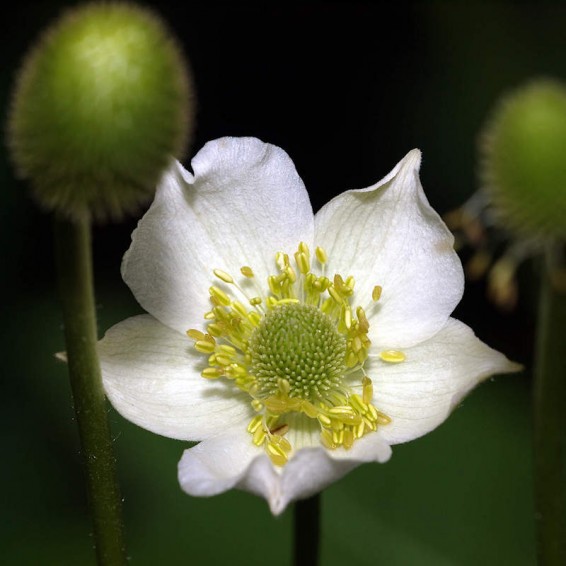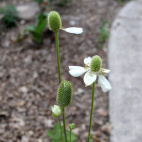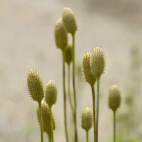Thimbleweed Seeds
Anemone cylindrica
- HOW TO GROW
- FAST FACTS
HOW TO GROW
Sowing: Direct sow Thimbleweed plant seeds on the surface of the soil in late fall or in the spring after the last frost. Germination takes place within 20-25 days at 65-70 degrees F. Thin or transplant seedlings.
Growing: Once established, these plants require little care. Anemone Cylindrica seeds grow best in full sun to partial shade and rather dry soil; they often grow naturally in sandy or rocky places.After several years of growth, they can be divided in early spring. This plant attracts bees.
Harvesting: The foliage of this plant can be toxic in large quantities, and is not recommended for medicinal use.
Seed Saving: After the flowers fade, the green cones will mature and begin to turn color. When the heads come easily loose from the stem and separate into cottony fluff, they should be harvested. Remove the seed heads in time to prevent the fluff from flying away on the wind. Spread the fluff out to dry completely, away from direct sunlight. Remove the stems and other debris, then store in a cool, dark place.
FAST FACTS
Common Names: Candle Anemone
Latin Name: Anemone cylindrica
Species Origin: US Native Wildflower
Type: Native Wildflowers
Life Cycle: Perennial
USDA Zones: 3, 4, 5, 6, 7, 8
US Regions: Mountain, Arid/Desert, Plains/Texas, Midwest, Northern, Northeast
Seeds per Ounce: 23,500
Stratification: Cold/Wet for 8 Weeks
Germination Ease: Stratify 8 Weeks
Sunlight: Full Sun, Part Sun
Height: 30 Inches
Color: White
Bloom Season: Blooms Early Summer
DESCRIPTION
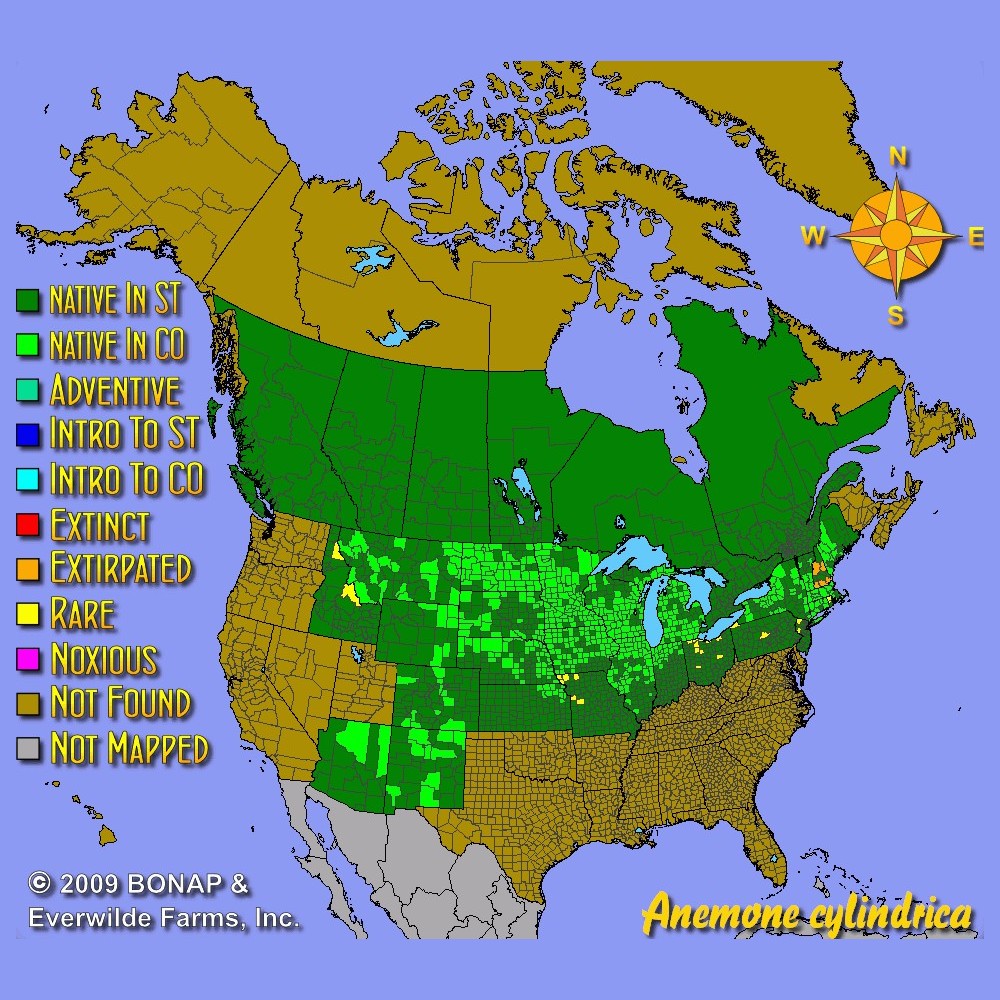
HOW TO GROW
Sowing: Direct sow Thimbleweed plant seeds on the surface of the soil in late fall or in the spring after the last frost. Germination takes place within 20-25 days at 65-70 degrees F. Thin or transplant seedlings.
Growing: Once established, these plants require little care. Anemone Cylindrica seeds grow best in full sun to partial shade and rather dry soil; they often grow naturally in sandy or rocky places.After several years of growth, they can be divided in early spring. This plant attracts bees.
Harvesting: The foliage of this plant can be toxic in large quantities, and is not recommended for medicinal use.
Seed Saving: After the flowers fade, the green cones will mature and begin to turn color. When the heads come easily loose from the stem and separate into cottony fluff, they should be harvested. Remove the seed heads in time to prevent the fluff from flying away on the wind. Spread the fluff out to dry completely, away from direct sunlight. Remove the stems and other debris, then store in a cool, dark place.
FAST FACTS
Common Names: Candle Anemone
Latin Name: Anemone cylindrica
Species Origin: US Native Wildflower
Type: Native Wildflowers
Life Cycle: Perennial
USDA Zones: 3, 4, 5, 6, 7, 8
US Regions: Mountain, Arid/Desert, Plains/Texas, Midwest, Northern, Northeast
Seeds per Ounce: 23,500
Stratification: Cold/Wet for 8 Weeks
Germination Ease: Stratify 8 Weeks
Sunlight: Full Sun, Part Sun
Height: 30 Inches
Color: White
Bloom Season: Blooms Early Summer
Also Consider These:
-
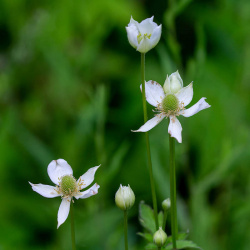 Tall Thimbleweed Seeds
Anemone virginiana
This tall flower develops a green thimble-shaped cone center. The unusual plant belongs to the anemone family and can thrive even in shady conditions.Quick Viewx
Tall Thimbleweed Seeds
Anemone virginiana
This tall flower develops a green thimble-shaped cone center. The unusual plant belongs to the anemone family and can thrive even in shady conditions.Quick ViewxTall Thimbleweed Seeds
Anemone virginiana
This tall flower develops a green thimble-shaped cone center. The unusual plant belongs to the anemone family and can thrive even in shady conditions.
$3.96 Pkt - $60.00 / Oz





